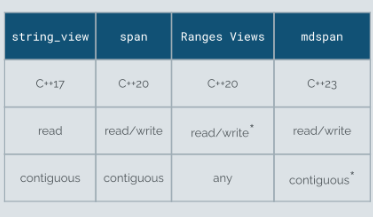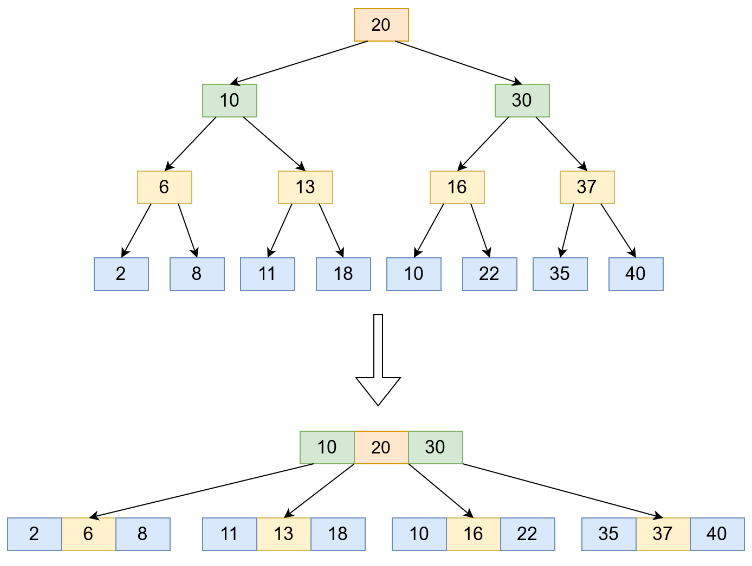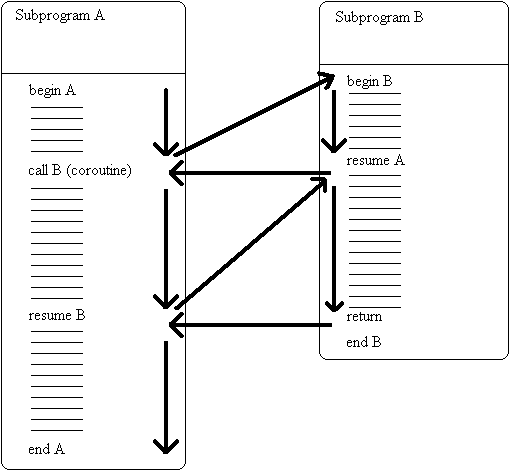Spans, string_view, and Ranges - Four View types (C++17 to C++23) -- Bartlomiej Filipek
 In this blog post, we’ll look at several different view/reference types introduced in Modern C++. The first one is
In this blog post, we’ll look at several different view/reference types introduced in Modern C++. The first one is string_view added in C++17. C++20 brought std::span and ranges views. The last addition is std::mdspan from C++23.
Spans, string_view, and Ranges - Four View types (C++17 to C++23)
by Bartlomiej Filipek
From the article:
Thestd::string_viewtype is a non-owning reference to a string. It provides an object-oriented way to represent strings and substrings without the overhead of copying or allocation that comes withstd::string.std::string_viewis especially handy in scenarios where temporary views are necessary, significantly improving the performance and expressiveness of string-handling code. The view object doesn’t allow modification of characters in the original string.
Here's a basic example:
#include <format>
#include <iostream>
#include <string_view>
void find_word(std::string_view text, std::string_view word) {
size_t pos = text.find(word);
if (pos != std::string_view::npos)
std::cout << std::format("Word found at position: {}\n", pos);
else
std::cout << "Word not found\n";
}
int main() {
std::string str = "The quick brown fox jumps over the lazy dog";
std::string_view sv = str;
find_word(sv, "quick");
find_word(sv, "lazy");
find_word(sv, "hello");
}

 The Visual C++ team attended CppCon 2023, the largest in-person C++ conference, in Aurora, Colorado from October 2-6th. There were over 700 attendees from the C++ community, and we really enjoyed getting a chance to meet all of you and talk about your unique backgrounds and C++ experiences.
The Visual C++ team attended CppCon 2023, the largest in-person C++ conference, in Aurora, Colorado from October 2-6th. There were over 700 attendees from the C++ community, and we really enjoyed getting a chance to meet all of you and talk about your unique backgrounds and C++ experiences. A new episode of the series about SObjectizer and message passing:
A new episode of the series about SObjectizer and message passing: In this post we talk about how data structure data layout effects software performance and how, by modifying it, we can speed up the access and modification of the data structure.
In this post we talk about how data structure data layout effects software performance and how, by modifying it, we can speed up the access and modification of the data structure. A report out from this week's ISO C++ standards committee meeting, which just ended:
A report out from this week's ISO C++ standards committee meeting, which just ended: Learn how the overload pattern works for
Learn how the overload pattern works for A new episode of the series about SObjectizer and message passing:
A new episode of the series about SObjectizer and message passing: The time has come, fellow devs. We are on our way to uncover the newest concept of C++ language – Coroutines.
The time has come, fellow devs. We are on our way to uncover the newest concept of C++ language – Coroutines.